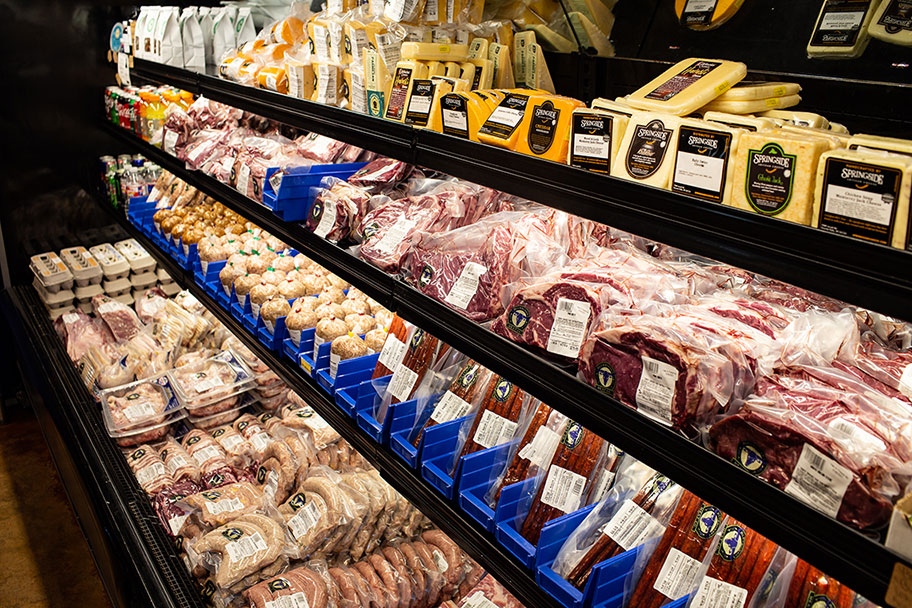Check Out the Local Taste at Bagley Farms Meat Market Edwardsville IL: Fresh and Delicious
Discover the Art of the Butcher's Cut in a Modern Meat Market
In the ever-evolving landscape of contemporary meat markets, the butcher's cut has transcended its traditional origins, merging olden craftsmanship with modern practices. What absolutely sets the modern butcher apart is their capability to forge a much deeper connection between customers and the beginnings of their meat.
Development of Butchery Techniques
The development of butchery techniques shows a rich tapestry of advancement and adjustment driven by improvements in modern technology, modifications in customer demand, and a much deeper understanding of meat scientific research. Historically, butchery was a craft passed down through generations, with approaches developed over centuries to maximize yield and taste. The industrial revolution ushered in automation, changing traditional methods and making it possible for large-scale processing.
The mid-20th century saw butchery techniques additionally fine-tuned by scientific insights right into muscular tissue biology and meat aging, enhancing both tenderness and preference. Innovations like vacuum packaging and refrigeration prolonged item shelf-life, permitting butchers to expand offerings and improve quality assurance. This period likewise marked the increase of specific devices, such as band saws and meat slicers, which boosted accuracy and performance in meat processing.

The 21st century has introduced electronic technology right into the butchery world. Digital systems currently help in tracking animal provenance and optimizing cuts to meet specific consumer choices. In addition, a renewal in artisanal butchery has arised, mixing standard skills with modern expertise to deal with customers looking for moral and lasting meat choices. This evolution emphasizes a vibrant interplay between practice and innovation, meeting modern needs while preserving the craft's heritage.
Recognizing Meat Cuts
Comprehending the complexities of meat cuts is important for both butchers and consumers looking for quality and worth. Each cut originates from a different component of the pet, imparting unique tastes, textures, and food preparation techniques - bagley farms meat market edwardsville il. Mastery of these distinctions not just boosts cooking experiences but additionally takes full advantage of the utility of each carcass. For butchers, specific cuts mirror ability and regard for the craft, guaranteeing marginal waste and optimum return.

Understanding muscular tissue structure is crucial; muscular tissues made use of a lot more regularly by the animal have a tendency to be tougher and are best suited for sluggish cooking methods, while less-used muscular tissues, like those discovered in visite site the loin, are more tender and perfect for barbecuing or roasting. Familiarity with these differences empowers customers to make informed selections, improving their culinary undertakings.
Choosing Top Quality Meat
Selecting the right meat entails more than simply picking an aesthetically attractive piece from the display screen. bagley farms meat market edwardsville il. The art of selecting top quality meat needs a critical eye and understanding of details features that represent quality and excellence. Pay interest to the shade; beef should have a brilliant, cherry-red tone, while lamb should display a soft pink tone, and pork a pale pink. This indicates the meat is fresh and hasn't been subjected to oxygen for also long.
Second of all, think about the marbling, which describes the white flecks of fat within the muscular tissue. Appropriate marbling is a crucial sign of tenderness and taste, as it melts throughout food preparation, enhancing the meat's juiciness. Keep in mind, greater marbling usually correlates with exceptional top quality cuts, such as USDA Prime.
Texture is another vital aspect; meat needs to really feel strong to the touch, not slimed or extremely soft. In addition, be conscious of the fragrance. Fresh meat needs to have a tidy, neutral scent, devoid of any sour or repulsive odors.
Coupling Cuts With Cooking Approaches

Alternatively, harder cuts like brisket and chuck roast are rich in collagen, which breaks down into jelly when prepared gradually. These cuts are perfect for braising or slow roasting, enabling the meat to soften with time and develop deep, complex flavors. Cuts such as short ribs and pork shoulder get on well with slow-cooking techniques, where prolonged cooking times change their robust structures right into delicious meals.
Lamb shanks and oxtail, which call for long term food preparation to soften, are excellent prospects for see here now stewing or sluggish simmering. These techniques coax out abundant, passionate tastes while preserving wetness. By comprehending the special features of each cut, cooks and home cooks alike can elevate their culinary developments, making certain each recipe is both pleasing and unforgettable.
The Butcher's Function Today
Browsing the progressing landscape of the modern meat market, the butcher's function today extends beyond plain preparation of cuts. Contemporary butchers are cooking artisans, teachers, and supporters for lasting practices.
Along with crafting precise cuts, butchers currently involve directly with clients, offering cooking guidance and customizing selections to match private demands and preferences. Their expertise in meat aging, marbling, and flavor accounts encourages consumers to make educated choices, boosting their cooking experiences. This individualized solution exemplifies the butcher's developing function as a relied on advisor in the kitchen.
Additionally, butchers are crucial in lessening waste, making use of whole animals to create diverse products such as sausages and supplies. This thorough strategy not only respects the pet but also aligns with contemporary sustainability goals. In this method, the modern-day butcher personifies both practice and innovation, adapting to an ever-changing market while protecting the virtuosity and honesty of their craft.
Verdict
Proficiency in recognizing varied meat cuts and quality indicators empowers butchers to provide enlightened referrals, straightening certain cuts with optimal food preparation approaches. By honoring historical techniques while accepting contemporary needs, the butcher's duty stays important in today's advanced meat market.